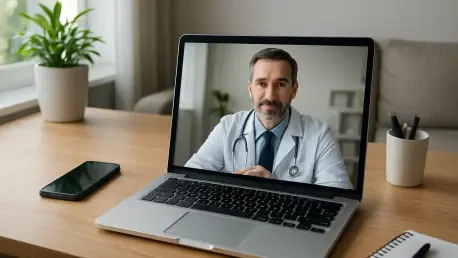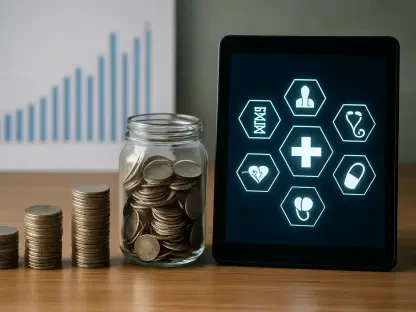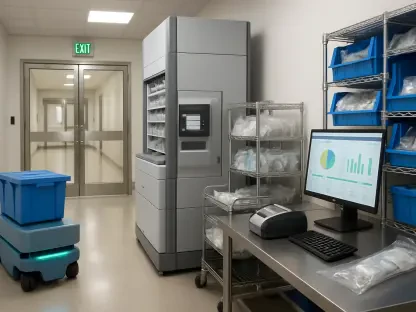In a world where healthcare access and personal comfort often collide, a staggering number of Americans face judgment based on their weight when seeking medical advice, creating a significant barrier to open communication with providers. Recent data from a comprehensive survey of over 7,000 adults across the U.S. reveals that weight bias is not just a fleeting concern but a pervasive issue affecting how individuals approach their health. For many, the fear of stigma in traditional medical settings has driven a search for alternatives that prioritize privacy and reduce shame. This growing unease has coincided with the rise of telehealth, a digital solution that promises to reshape the landscape of healthcare delivery. As virtual platforms gain traction, questions emerge about whether they can truly address the deep-rooted problem of bias in medical interactions. This article explores the extent of weight bias in conventional settings, the potential of telehealth to offer a stigma-free environment, and the broader influences shaping health and body image today.
Unpacking Weight Bias in Traditional Healthcare
Weight bias in healthcare settings remains a significant hurdle for many Americans, with around 12% reporting experiences of judgment during doctor visits, a figure that climbs higher among specific groups like moms, people of color, and LGBTQ+ individuals. This bias often manifests as subtle or overt criticism from medical professionals, leaving patients hesitant to discuss weight-related concerns. According to survey findings, barriers such as fear of judgment impact 21% of respondents, while shame affects 14%, and social stigma deters 8% from seeking care. These emotional obstacles create a cycle where individuals avoid necessary conversations, potentially delaying critical interventions. Despite these challenges, trust in physicians persists, with 42% of Americans still viewing doctors as the most reliable source for health advice, far surpassing digital tools or social platforms. This paradox highlights a complex dynamic where trust coexists with discomfort, underscoring the urgent need for environments that foster open dialogue without fear of bias.
The impact of weight bias extends beyond individual encounters, shaping broader health outcomes and patient behavior across demographics. For 32% of surveyed adults, doctors are the first point of contact for weight loss discussions, outranking friends, partners, or therapists. Yet, the reluctance to address weight due to perceived judgment often results in missed opportunities for guidance on safe and effective strategies. This issue is particularly pronounced among vulnerable populations, where rates of bias are reported as high as 17% in certain communities. Such disparities reveal systemic challenges within healthcare that go beyond personal interactions, pointing to cultural and societal norms that influence provider attitudes. As patients grapple with these realities, the demand for alternative care models grows, pushing the conversation toward solutions that can mitigate stigma while maintaining the trust and expertise associated with medical professionals. The question remains how to balance these competing needs in a system often resistant to change.
Telehealth as a Stigma-Free Alternative
Amid the challenges of weight bias, telehealth has emerged as a compelling option, with 8% of Americans turning to virtual platforms for weight loss advice, ranking it among the top resources alongside physicians and online searches. Over the past few years, 15% of the population has adopted telehealth for a range of needs, from mental health support to weight management, reflecting a shift toward accessible and discreet care. Virtual consultations offer a layer of anonymity that can alleviate the fear of judgment many experience in face-to-face settings, allowing for more candid discussions about sensitive topics. This format also eliminates logistical barriers like travel or scheduling conflicts, making healthcare more approachable for those who might otherwise avoid it. As telehealth continues to gain popularity, its potential to create a more inclusive medical environment becomes increasingly evident, though its effectiveness in fully addressing bias remains under scrutiny.
While telehealth presents clear advantages, it is not without limitations in tackling the nuanced issue of weight bias in healthcare interactions. The digital medium can reduce personal connection, potentially impacting the depth of trust between patient and provider, a factor critical to 42% of Americans who value physician input above all else. Additionally, not all individuals have equal access to the technology required for virtual care, which could exacerbate existing disparities in healthcare access. Despite these hurdles, the trend toward telehealth signals a broader cultural shift toward prioritizing patient comfort and autonomy in medical decision-making. For many, the ability to seek advice from the privacy of home represents a significant step forward in reducing stigma. As this platform evolves, ongoing efforts to ensure equitable access and maintain quality of care will be essential to realizing its full potential as a solution to bias-related barriers in health management.
Shaping Body Image and Weight Loss Trends
Beyond the realm of healthcare delivery, societal and personal factors play a substantial role in how Americans perceive body image and approach weight loss. Survey data indicates that doctors share influence with social media platforms like TikTok in shaping body ideals, outpacing traditional figures like celebrities or fitness trainers. Meanwhile, 27% of respondents point to their own reflection as the primary driver of self-perception, highlighting the deeply personal nature of body image. This mix of external and internal influences creates a complex landscape where individuals navigate health goals amid competing pressures. As a significant portion of the population plans to focus on weight loss in the coming years, understanding these drivers becomes crucial to supporting effective and sustainable strategies that align with personal values rather than societal judgment.
The diversity of weight loss methods adopted by Americans further illustrates the multifaceted approach to health in today’s society. Exercise leads as the most common strategy at 41%, followed by dietary adjustments like reducing carbs or fats, practiced by 28% and 25% respectively. Other methods, such as intermittent fasting, calorie-tracking apps, and even weight loss medications, reflect a blend of traditional and modern tactics tailored to individual needs. This variety underscores the importance of personalized healthcare guidance that respects diverse preferences and circumstances. While trust in doctors remains strong, the rise of alternative influences and self-directed strategies suggests a growing desire for autonomy in health decisions. As telehealth and other innovations reshape access to care, aligning medical advice with these evolving trends will be key to fostering supportive environments free from the weight of bias.
Reflecting on a Path Forward
Looking back, the journey to address weight bias in healthcare reveals a landscape marked by persistent challenges and emerging solutions like telehealth that reshape patient experiences. The data paints a clear picture of stigma as a barrier, yet trust in physicians endures as a cornerstone of health guidance. Virtual platforms offer a glimpse of hope, providing spaces where judgment seems less daunting for many. Moving forward, the focus must shift to enhancing these digital tools to ensure they bridge gaps in access and maintain the personal connection vital to effective care. Stakeholders in healthcare should prioritize training providers to recognize and mitigate bias, while expanding telehealth infrastructure to reach underserved communities. By blending technological innovation with a commitment to empathy, the medical field can pave the way for a future where every patient feels heard and supported, regardless of physical attributes or societal perceptions.









